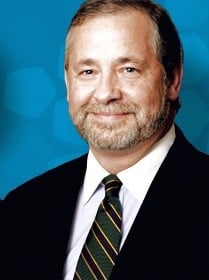
High-frequency trading, and algorithmic trading in general, which has transformed trading in equities, is not readily applicable to the cash bond markets, mainly because of the breadth of fixed income securities.
“With high-frequency trading or algorithmic style trading, as we have seen in the equity markets, one must have to have the ability to trade large volumes for very, very tiny incremental price improvement primarily through computers,” said Robert Smith, chief investment officer for Sage Advisory, a wealth management firm.
“High-frequency traders need to have the ability to move in and out of short term positions in seconds or fractions of a second throughout the trading day,” he said. “For the most part, traditional fixed income markets are completely designed or organized to work against something like that outside of perhaps the U.S. Treasury market.”

Robert Smith, Sage Advisory Services
The Sage fixed income platform includes both taxable and tax-exempt strategies. In addition to core fixed income offerings, it constructs tailored solutions for institutional clients.
“Traders in fixed income and interest rates market have just as much need for effective execution and transaction cost management as do their counterparts in the equities markets, although the latter have received vastly more quantitative attention,” wrote Robert Almgren, president and co-founder of Quantitative Brokers, in a 2013 paper, “Execution Strategies in Fixed Income Markets. “Several features of interest rates futures markets in particular are substantially different from these other markets, and must be taken proper account of in order to achieve good execution results.”
Quantitative Brokers services fixed income, equity index, and energy futures traders with algorithms designed to minimize market impact.
Execution techniques in equities have advanced far ahead of those in other markets such as futures, options, foreign exchange, and fixed income, according to Almgren. “Quant researchers in equity markets have focused intensively on the details of the execution process,” he wrote. “By contrast, fixed income products are inherently complex, and quantitatively minded researchers in the area have focused on such aspects as yield curve modeling, day counts, etc.”
An attempt to apply high-frequency trading in fixed income would have limited or no success outside of the U.S. Treasury market because HFT traders work for such thin margins of price difference, “which require sizable volume and supply density of the traded asset in order to be profitable,” said Smith. “Also, typically they require large centralized market making and clearing systems for liquidity. These are not common attributes within the fixed income markets.”
Outside of the U.S. Treasury sector, intraday liquidity, volume and sourcing of viable securities for computer program driven trading becomes immensely challenging, if not impossible. One of the key barriers to success for these types of trading models is the issue of how much float may be available in any individual security or group of desired securities at any point in time during the trading day.
“For instance, in long corporate bonds right now, that market is probably a trillion dollars in size, and there is probably two and a half trillion worth of demand in terms of LDI or insurance entity buyers that are currently out there in the market,” said Smith. “Typically, these are buy and hold investors that can swallow large chunks of these securities thus diminishing their tradable float. To attempt algorithmic trading with the goal of buying and holding low float securities often fraught with settlement fails and other similar concerns would likely be a costly exercise.”
Feature image via Rawpixe/Dollar Photo Stock





